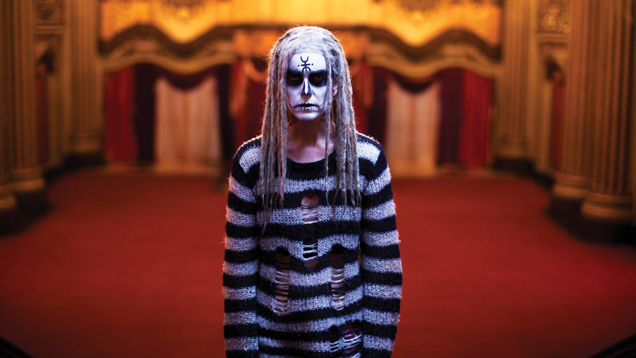Why we love witches
 CREDIT: ANCHOR BAY (2012)
CREDIT: ANCHOR BAY (2012)Rob Zombie's The Lords of Salem centers around the main characters personal struggles while coming to terms with the fact that witches actually exist.
In many mythologies, the figure of the witch juxtaposes unspeakable evil with archetypical femininity, making her difficult to identify as a power-hungry Satan worshipper at first glance. Our own mainstream media typically deals with this by polarizing witches onto either side, as is exemplified in The Wizard of Oz or the Harry Potter series.
And yet, films portraying the more cryptic witch have also proven to be extremely popular with Western audiences. This is the witch whom we may never initially suspect is practicing child sacrifices just a few doors down the street, or placing a curse on us as punishment for cutting in front in the line at the bank.
Alleged witches have been singled out by their neighbours for centuries, most notably during the Salem Witch Trials in the 17th century. The tragic outcomes of this event are a testament to how swiftly the fever of hysteria can spread throughout a community and turn rational thinkers into cold-blooded killers.
Whether or not witches actually existed at the time is beside the point; paranoia was the main thrust of the entire affair. The exaggerated fear of being the victim of a conspiracy has since gone on to be a common theme in several prominent witch films.
In 1968, Roman Polanski pitted a vulnerable young woman against an apartment building of witches in Rosemary’s Baby. Rosemary’s suspicions of the coven are kept unsubstantiated until the end of the film when she mothers the spawn of Satan at their behest.
Similarly, Dario Argento’s 1977 classic Suspiria follows a young woman investigating the mysterious owners of her ballet school, who may or may not be ancient witches. Like Rosemary, Suspiria’s heroine is believed by no one and must singularly face off with her powerful foes until the bitter end.
Polanski delved deeper into the world of covens in 1999s The Ninth Gate, where a man too curious for his own good accidentally stumbles upon a secret group of aristocrats intent on raising the devil, no matter how many orgies it takes.
Also from 1999 is Daniel Myrick and Eduardo Sanchez’s The Blair Witch Project, a film that confirms a small town’s mania over the existence of a backwoods witch.
In 2012, Rob Zombie’s The Lords of Salem saw a culmination of the aforementioned plots as a group of Salem Trial descendants select an unsuspecting radio host to bear the Anti-Christ. Like its predecessors, this film hinges on a lone character’s self-doubt, paranoia and deterioration into madness before confronting the unsettling fact that witches actually abound.
As they draw on the same elements of paranoia that have been described in the Salem Witch Trials, these and other witch films resonate with audiences because they validate an all too common fear that nefarious powers lurk in unknown places.
We love witches because we love witch hunts, and we love witch hunts because we love scapegoats. When you’re fearful but can’t rightly explain why, it’s natural to admit that there’s nothing more alleviating than finally having somewhere to point your finger. Witch films give us this outlet, but one must remember that real life requires a separation of facts from inherent prejudices. Hopefully we’ve come a long way from stake burnings.
















